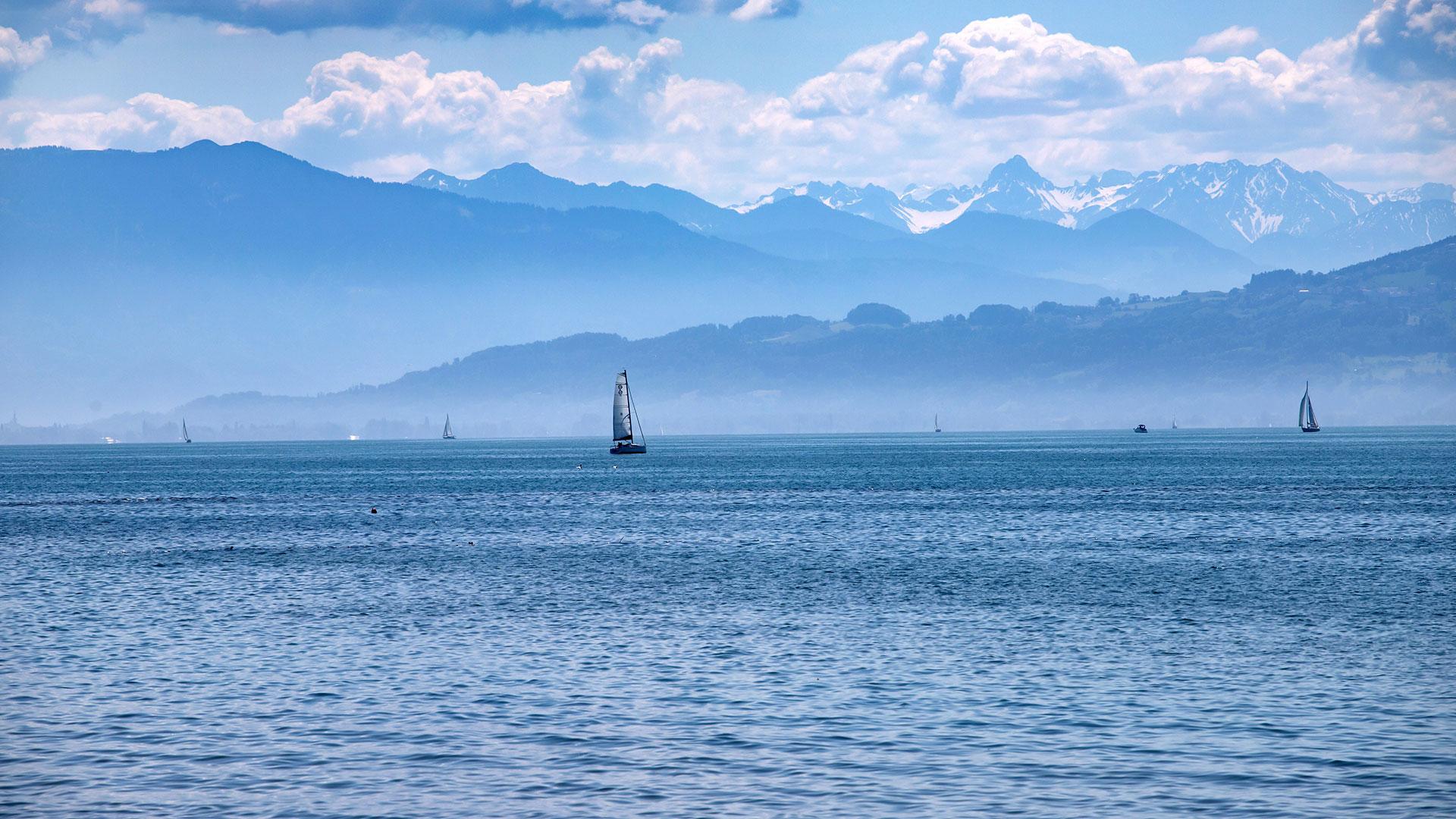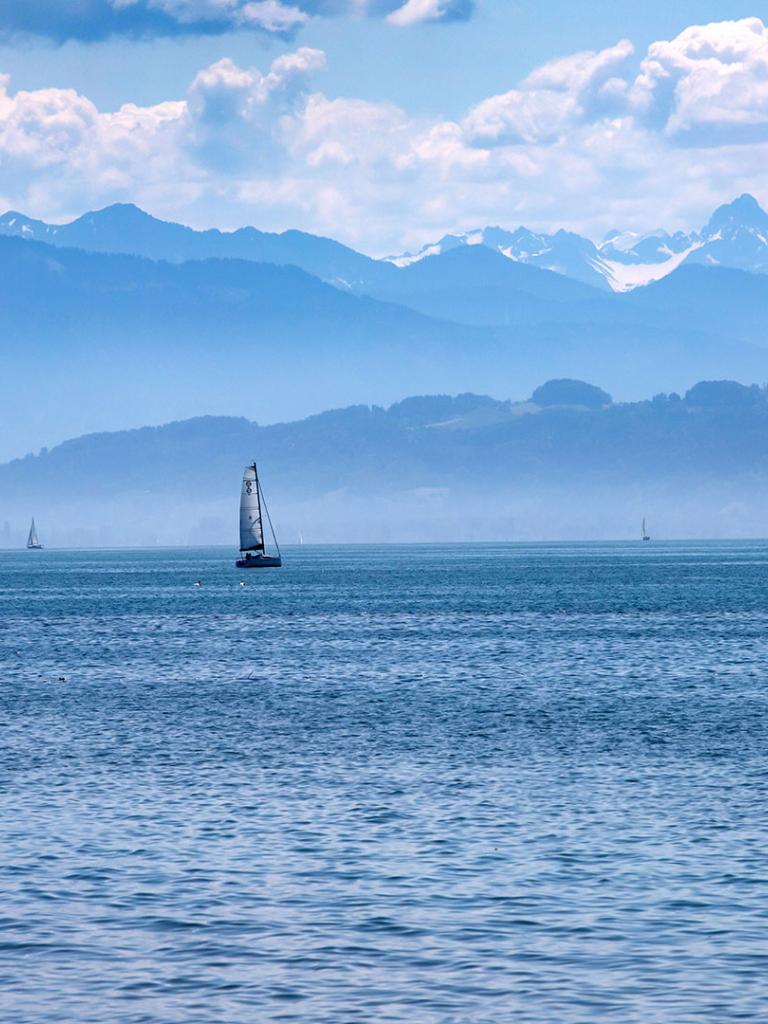28 March 2023
01 June 2020
The inter-comparison between KIT’s and NOC’s radiometers will take advantage of existing infrastructure (Figure 1) on-board the car ferry MS Friedrichshafen, which is operated by Bodensee-Schiffsbetriebe GmbH (BSB) and connects Friedrichshafen in Germany with Romanshorn in Switzerland.
Objectives
The inter-comparison will enhance our understanding of satellite derived Lake Water Surface Temperature (LWST) observations and measurements with shipborne infrared radiometers (Heitronics KT15.85 IIP and ISAR). It will allow the validation of satellite-retrieved Surface Temperature products, in particular from Sentinel-3, as well as verifying the accuracy of KIT’s in-situ LWST. Furthermore, the study is expected to improve our understanding of per pixel uncertainty estimation models.
The main activities of the study are to:
- Acquire an LWST dataset over Lake Constance from two FRM radiometers operating in parallel.
- Inter-compare the in-situ LWST data and the uncertainties of the two FRM radiometers.
- Compare infra-red satellite products of surface temperature, in particular Sentinel-3, and their associated uncertainties with the in-situ LWST.
Overview
Previous work carried out under the FRM4STS project, eg at Wraysbury reservoir in 2016, is the basis for having traceable LWST measurements: the current science study extends shipborne bilateral campaigns performed in FRM4STS phase 2A.
One of the issues of previous FRM4TS campaigns was the relatively short period of observations, e.g. one week for Wraysbury reservoir and two weeks of usable data for the Queen Mary 2, which only covered some of the range of environmental conditions experienced by instruments during long-term deployments. Nevertheless, a number of very useful insights into the performance of the participating instruments and the differences in the retrieved surface temperatures were gained. However, an in depth analysis especially of the uncertainty models needs to evaluate the performance under a wider range of environmental conditions. The Friedrichshafen’s schedule allows for sampling the water body along the ferry’s track up to 16 times per day, which will enables us to analyse in detail the evolution of LWST over a diurnal cycle. The KT15.85 IIP radiometer’s faster sampling rate compared to the ISAR (10 sec vs 240 sec, respectively) allows analysing the surface and sky evolution during individual ISAR scans and will help not only to further our understanding of how spatial and temporal variability affects LWST retrieval, but also improving the ISAR uncertainty model. Another focus of the radiometer inter-comparison will be the effect of view angle (surface and sky) on LWST and its uncertainty, which can be studied by setting ISAR’s scan mirror to various angles, thereby simulating ship wake contamination as well as the accuracy of KIT’s current radiometer set up (KT15.85 IIP’s view angle of 55° has primarily been chosen to avoid the ferry’s bow wave). Furthermore, the planned work links into ESA’s CCI+ on Land Surface Temperature (LST) and offers the opportunity to validate LWST products and to characterise their uncertainties.
Various LST and Sea Surface Temperature (SST) products are operationally retrieved from a number of satellite sensors; however, these have not been validated over a common lake water target, which requires that simultaneous in-situ LWST data are available. LWST is the surface skin temperature of the lake and most accurately determined from fiducial reference measurements (FRM) with TIR field radiometers. Large water bodies are the most homogeneous and isothermal land cover and, therefore, ideal for validating satellite-retrieved surface temperatures and suitable for sensor calibration. Worldwide only very few locations exist where in-situ LWST is measured, most notably Lake Tahoe (USA), where the Jet Propulsion Laboratory (JPL) continuously operates radiometers on four buoys since 1999; until now no similar European site exists.
Karlsruhe Institute of Technology (KIT) has more than 15 years of experience in determining in-situ LST for validating LSA SAF LST products and participated in several inter-comparison experiments (laboratory, land, and water; www.frm4sts.org). Building on this experience, in September 2014 KIT installed the instrument package for in-situ LWST determination on-board the car ferry. In-situ LWST from the Friedrichshafen are obtained at about 100 m sampling distance and can be spatially averaged to match various satellite-retrieved surface temperature products. In April 2016 KIT installed an improved instrument package on the ferry: since then LWST data are nearly continuously available. The study will inter-compare and validate currently available LST and SST level 2 products over Lake Constance, e.g. products retrieved from polar orbiters (Sentinel-3/SLSTR, Metop/AVHRR, Terra & Aqua/MODIS, Suomi-NPP/VIIRS) and the geostationary MSG/SEVIRI. The results are expected to contribute to our understanding of surface temperature retrieval and will provide an assessment of uncertainty estimates.





